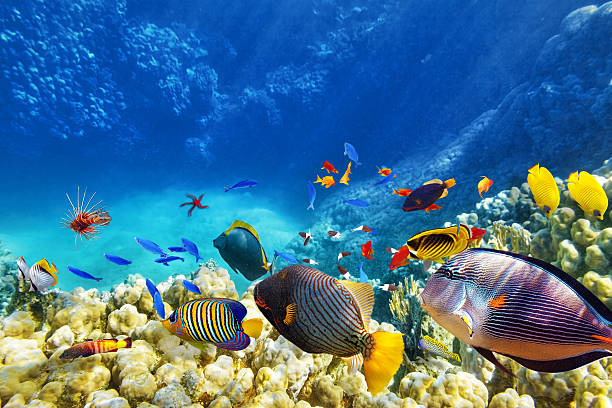Setting Up Your Saltwater Aquarium
You have always dreamed of owning a saltwater aquarium. The mesmerizing dance of colorful fish, the soothing motion of seagrass, the mysteries of coral reefs – it all calls to you. Yet as you stand before your new tank, anxiety bubbles up. This is a complex ecosystem that requires balance and care. Take heart! With research, patience, and the right equipment, you can create a harmonious underwater world. Monitoring water chemistry, introducing species gradually, and practicing proper tank maintenance will lead you to success. Let your imagination run wild with rock structures and reefs, but restrain the impulse to overstock. This is a journey that rewards those who proceed with wisdom. You now hold an entire ocean in your hands. Treat it with respect, and you will be rewarded with a thriving aquatic paradise.
Maintaining Balance in a Saltwater Aquarium
To establish a healthy saltwater ecosystem in your aquarium, you’ll need to provide the proper conditions. The first step is choosing a suitably sized tank. A larger tank, from 30 to 55 gallons, gives you more stability and options.
Next, fill it with a saltwater mix and let it circulate for at least a week before adding any inhabitants. You’ll need a protein skimmer, filtration system, heater, thermometer, hydrometer, and light. Place the tank in a spot with ambient room temperature and minimal fluctuations.
When adding livestock, do so gradually over time. Start with hardy organisms like live rock, macroalgae, and snails or hermit crabs. Check water parameters daily and perform regular partial water changes of 10-15% weekly or biweekly.
Feed your fish a varied, high-quality diet 2-3 times daily, and monitor them for signs of stress or disease. Only add new fish once your tank has stabilized and current inhabitants are thriving. Limit yourself to 1 new fish per 10-15 gallons at a time.
Maintaining harmony requires consistent care and close observation. But cultivating a balanced, self-sustaining ecosystem will reward you with a stunning slice of ocean life in your own home. Keeping a saltwater aquarium can be challenging, but also deeply rewarding. With patience and the right approach, you’ll be enjoying your own reef paradise in no time.
Common Problems in Saltwater Aquariums and How to Fix Them
To achieve harmony in your saltwater aquarium, you must maintain the delicate balance of elements that marine life depends on. This means providing ideal water conditions, nutrition, living spaces, and compatibility between inhabitants.
Water Quality
Test pH, salinity, ammonia, nitrite, and nitrate levels regularly and make adjustments as needed. Marine life has narrow tolerance ranges for water conditions.
1. pH should remain between 8.1 and 8.4 for most saltwater aquariums.
2. Salinity between 1.023 to 1.025 is ideal for a community tank.
3. Ammonia and nitrite must remain at 0 ppm, while nitrate below 20 ppm.
Nutrition
Offer a varied diet with algae, meaty foods like shrimp or fish, and vitamin supplements. Feeding 2-3 small portions daily is typical. Remove uneaten food within 30 minutes to avoid pollution.
Habitat
Provide plenty of live rock and substrate for filtration, shelter, and grazing. Arrange decor in a natural-looking reef structure. Ensure each inhabitant has adequate space to freely swim and places to hide when desired.
Compatibility
Choose fish, invertebrates, corals, and algae that have the same environmental needs and will not harm one another. Some species may nip at or eat others. Do research to select compatible tankmates for a peaceful community.
By consistently monitoring and maintaining the critical elements of water quality, nutrition, habitat, and compatibility in your saltwater aquarium, you can achieve a balanced and thriving miniature ocean ecosystem.




